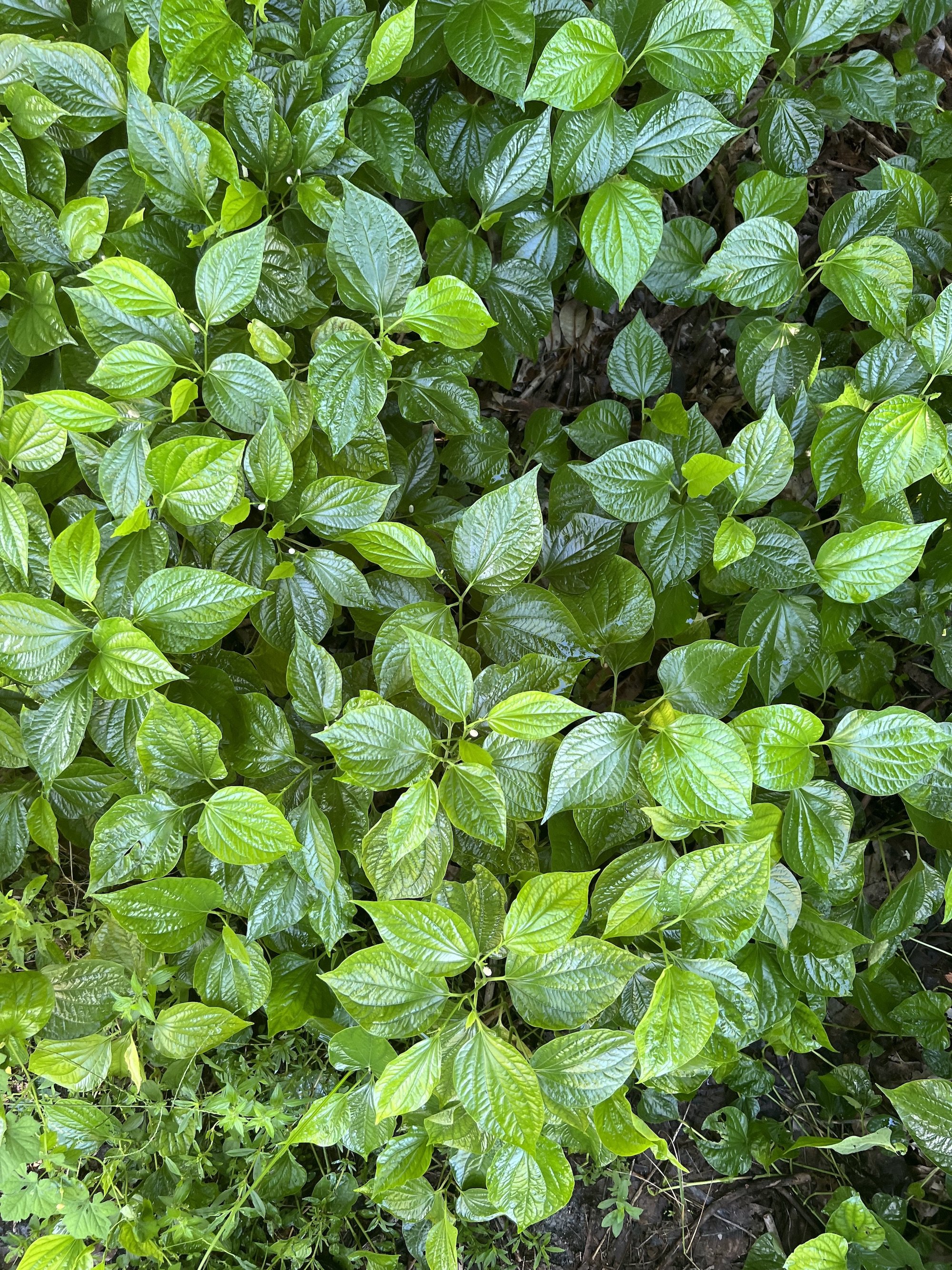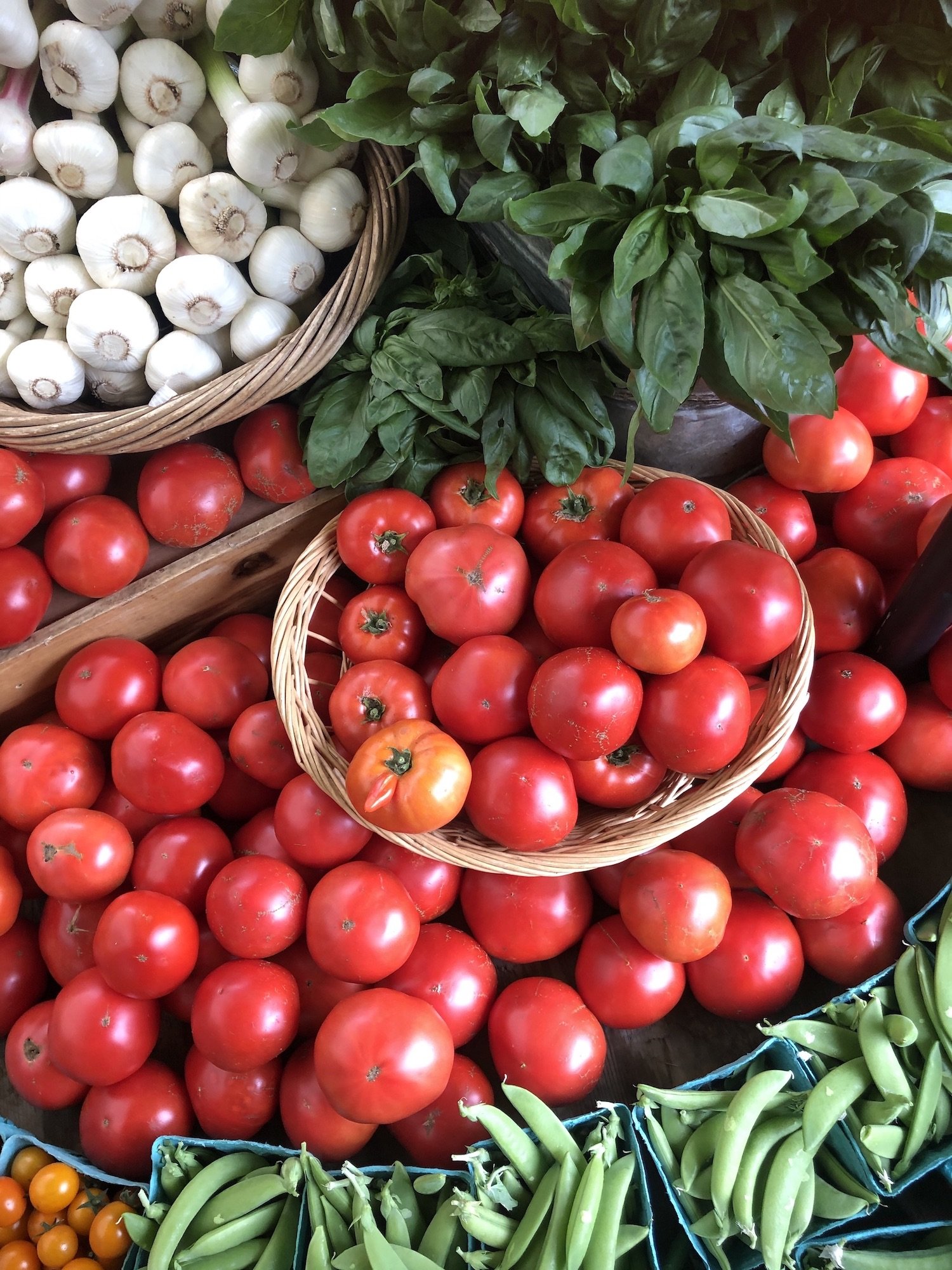
Plant Profiles
Ashwaganda
An incredibly medicinal plant generally grown for its roots and leaves. Although it is known to have benefit for a great many bodily functions, it is particularly well known for being an adpatagen, helping us to respond better to stress, and for giving a well-rounded strength and energy and decreasing inflammation.
Hierba Mora
A common plant you’ll find growing as “a weed” throughout the Americas, this green when eaten young (before it flowers) is incredibly nutrient rich and flavorful much like spinach, and is eaten regularly in soups and stir-fries in many Indigenous and Latinx communities as a common quelite. The fruits are small blueberry-sized berries that are poisonous when green, but tasty and harmless when ripened to fully black.
Tobacco
With large, thick, sticky leaves, tobacco is one of many indigenous, medicinal plants that has become villainized, but also weaponized into the commercial toxic products we find ourselves addicted to at alarming rates. Essential to many indigenous cultures as a beloved herb, tobacco has been very misunderstood in our capitalistic post-colonial world. (Photo-Tobacco was part of Native American culture long before Europeans)
Quishtán
This Solanaceous green is super spiny, but when the young leaves and stems are cooked down they make for a delicious, melt-in-your-mouth green with a spinach-artichoke flavor. Larger spines are removed while younger ones soften up easily. Quishtán is indigenous to Guatemala and is commonly cooked en caldos y sopas, in broths and soups.
Andean Potatoes
Although all potatoes originate in the Andes, the origin of diversity home to over 4,000 varieties, we tend to see just a few colors of nice round potatoes in stores and at markets. Explore the gorgeous diversity of rumply lumpy splotchy multi-colored potatoes that have colorful surprises inside and out, and a variety of textures and flavors to be enjoyed. (Photo—The guardians of the Andean potato)
Fingerlings
Thanks to European colonizers, these Andean potatoes made their way to France where they were bred into the popular Fingerling potatoes that are a somewhat common specialty potato in stores. With a long thing shape they are ideal for roasting and quick-cooking, and are known to have a particularly condensed buttery flavor. (Photo—Harvesting History)
Yellow Potatoes
There are many common yellow-skinned potatoes, big russets and Yukon Gold and hundreds of others. Some have a more waxy texture, some have more of a mealy texture better for mashed potatoes, every variety its own being entirely.
Red Potatoes
Often white-fleshed with a pink blush inside, red potatoes can be roasted up or plopped into a soup just like any other potato, but they lend themselves particularly well to dishes that have a bit of a tang, like potato salads.
Purple Potatoes
There’s no doubt about it, purple potatoes are always so beautiful. Ranging from white to yellow to purple flesh, either solid colored or with rings of color within, purple potatoes add rich colorful flavor to any dish.
Dry-Farmed
Grown without any irrigation, dry-farmed tomatoes have the sweetest, condensed, almost sauce-like flavor. Despite their incredible flavor, they are grown to address the climate crises that we’re facing, including hotter summers and decreased water access.
Slicers
The classic red tomato that is the bases of salsas, sauces, and incredible dishes all around the world, but particularly throughout Central and South America where tomatoes originated from. With less bells and whistles than whimsical cherries or extravagant heirlooms, these ripe red tomatoes will never cease to satisfy.




















